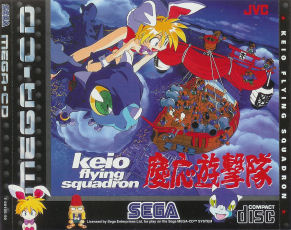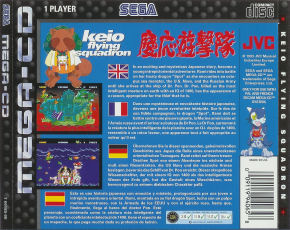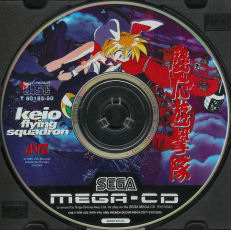|
Keio Flying Squadron |
||||||||||||||||||
|
"In an exciting and mysterious Japanese story, become a young intrepid oriental adventurer. Rami rides into battle on her trusty dragon "Spot" as she encounters an octopus sea monster, the U.S. Navy, and the Russian army until she arrives at the ship of Dr. Pon. Dr. Pon, billed as the most intelligent creature on earth with an IQ of 1400, has the appearance of a racoon, appropriate for the thief that he is." |
||||||||||||||||||
|
|
|||||||||||||||||
|
|
|||||||||||||||||
 |
|
|
 |
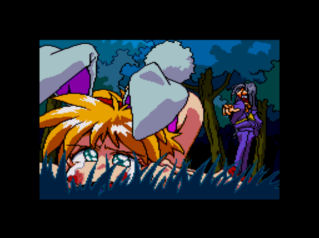 |
|
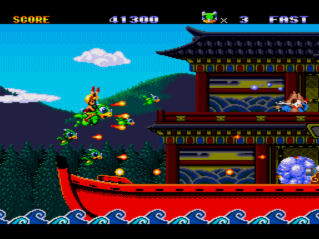 |
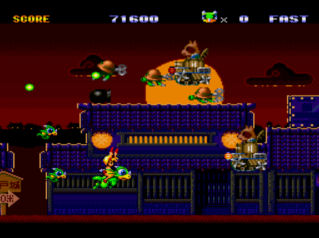 |
|
| The scan of the spine card for Keio Flying Squadron was kindly supplied by Damian Maidment | ||
|
The blurb on the back of the box
doesn't make a lot of sense, and to be honest neither does the
intro, but both suit the crazy nature of the game and the utterly
insane nature of the enemies you'll face. At no point is the
reason for Rami's bunny girl outfit explained either... Keio Flying Squadron is in the classic 2D side scrolling shooter mould, and makes a very good job of it. The dragon you ride can be switched between slow and fast movement, and you can have up to two "Spot juniors" flying with you to provide a shield and extra fire power. The range of power-ups is a little more limited than usual, being restricted to two main weapons at six levels each (forward and three-way shot) and three sub-weapons (ground bombs, explosive shuriken and homing Spot juniors) which are fired at will, as well as the occasional extra life. The difficulty levels really do affect the game - on "easy" the game is fun for non-shooter fans, and on "hard" Sol-Feace levels of madness ensue, meaning there's something for everyone. The only flaw is that present in all games of this genre - if you die well into the game you lose all the power-ups you've collected meaning that it becomes much harder to defeat whatever killed you. In fairness, a proportion of what you've collected will appear on screen when you die, and a few precious seconds of invincibility allows you to recoup some of what you've lost. The sprites are all well drawn and animated, as is the opening anime-style movie. The backgrounds are often bland but are frequently covered by enemy transports or oversized mid and end of level bosses, and the screen never becomes so cluttered that you can't tell what's going on. The Japanese music is on quite a short loop but never gets irritating, and for some reason it seems to suit the general wackiness on screen. Spot effects are a little weak, making your shots sound weedy and some of the enemies could explode with a bigger bang than they do. |
||
| An unintentionally generous demo CD was given away with issue 3 of Sega Pro | ||
